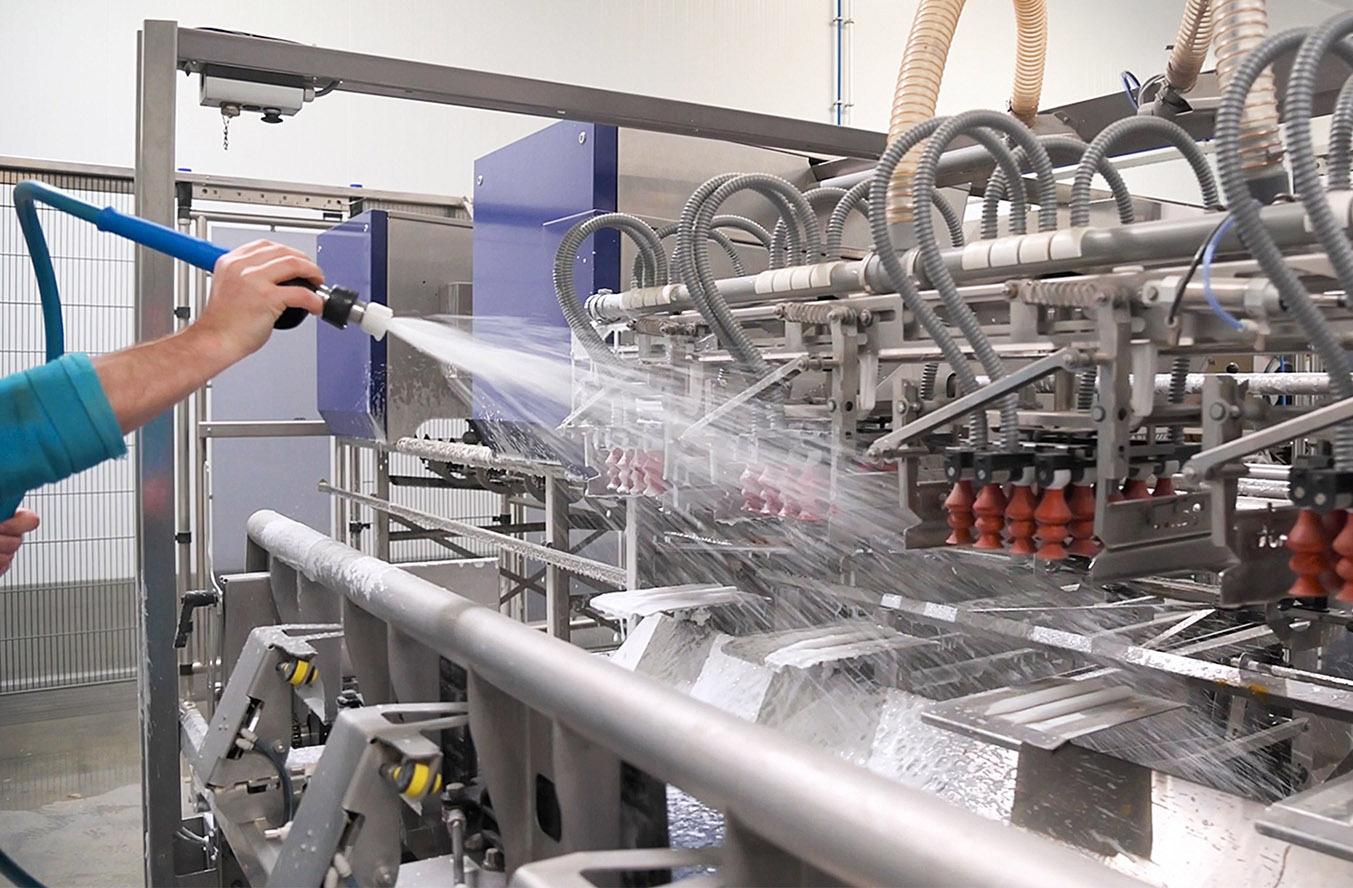Cleaning, decontamination and disinfection. What's the difference?
- Tuesday 18 June 2024
- By: BOONS FIS
- Category: Foaming and disinfection installations
Every company in the food processing industry cannot do without it: hygiene is the most important aspect for continuous and safe operation of production lines. Safe for employees, visitors, finished products and consumers. In this context, cleaning, decontamination and sanitising are essential parts of the food safety guidelines that the sector sets. Food safety, hygiene and a high-quality end product depend on this.
Various actions are possible in the fight against viruses, diseases, contamination, biofilm formation, etc. They are implemented based on the established hygiene and cleaning process within a (food processing) company.
We focus on the 3 most important actions; cleaning, decontamination and disinfecton. Sterilization can also be added in certain sectors.


Cleaning
Cleaning is usually the first step in the cleaning process with the sole purpose of ‘cleaning’ the work surface, equipment, production hall, ... using soap or other chemicals. Visible dirt, debris and dust are removed. Cleaning does not eliminate or kill germs, but it helps reduce their number. Alkaline or acidic cleaning agents can help.
Decontamination
Decontamination has in addition a deeper effect compared to cleaning, the function of reducing the number of bacteria to the level considered safe according to the standards prescribed by public health or certificates within the food processing industry (HACCP, IFS, BRC, FSSC, etc.). Decontaminating chemicals must kill 99.999% of bacteria within 30 seconds to meet these requirements. However, they do not kill all micro-organisms despite their high efficiency.
Disinfection
Disinfection is more powerful than decontamination and can be applied to living tissues (human skin) as well as on (working) materials. A disinfectant kills viruses and pathogens within minutes. The exposure time, stated on the product label, must therefore be respected.

Food safety is top priority
In general, it is important to follow an integrated cleaning and disinfection protocol to ensure that surfaces are hygienic and that food products can be processed safely. Using appropriate cleaning and disinfecting agents, as well as following appropriate procedures, contributes to maintaining high food safety standards.
In this earlier blog we also delve deeper into the different actions and the four universal factors of a cleaning cycle that are brought together in the "Sinner Circle", as time, temperature, chemical action and mechanical force.
